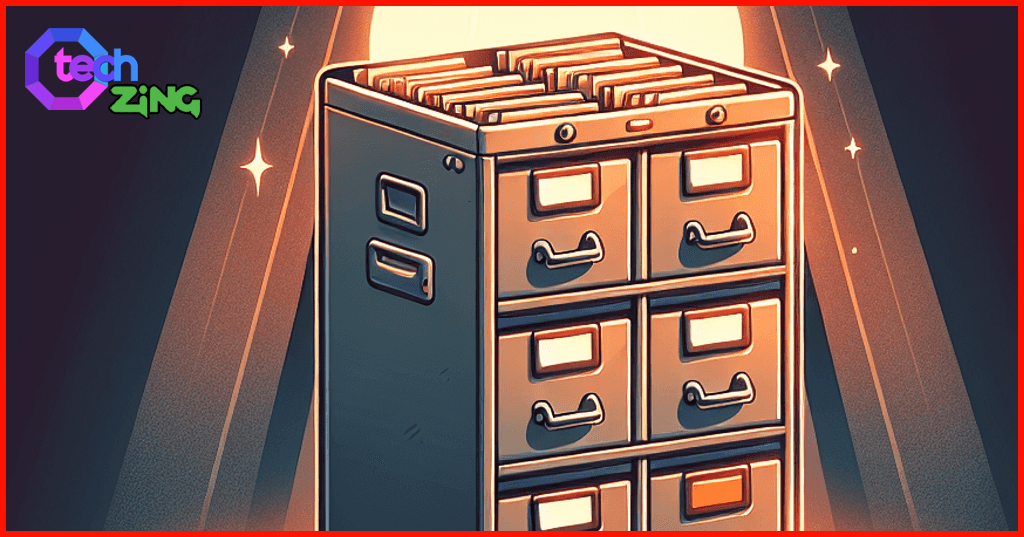Efficient file management is crucial for smooth operations in software development. Serialization libraries are essential for storing and retrieving data, making sure that information is organized and easy to access. This is where Nippyfile comes in – a powerful serialization library designed specifically for Clojure, offering a revolutionary approach to file management processes.

What is Nippyfile?
Nippyfile is a serialization library that provides a range of benefits and features for managing files in Clojure:
- Swift and compact binary format: Nippyfile uses an efficient binary format for storing and retrieving data quickly.
- Seamless integration: It seamlessly integrates with existing Clojure libraries and frameworks, making it easy to incorporate into your projects.
- Support for custom types: Nippyfile allows you to work with complex data structures by providing support for custom types.
Through this article, we will explore the key advantages and functionalities of Nippyfile, empowering you with valuable knowledge to enhance your file management strategies in Clojure.
Understanding Nippyfile: A Versatile Solution for File Management in Clojure
Nippyfile is a powerful serialization library for Clojure that offers efficient data storage and retrieval capabilities. By utilizing its compact binary format, Nippyfile ensures optimal performance and compact file sizes. In addition to its storage benefits, Nippyfile also provides schema evolution support, which allows for compatibility during the file read/write process.
Efficient Data Storage and Retrieval
One of the key advantages of using Nippyfile is its ability to efficiently store and retrieve data. The compact binary format used by Nippyfile reduces the size of the serialized data, resulting in smaller file sizes compared to other formats like JSON or XML. This not only saves disk space but also improves the overall performance of file operations.
When working with large datasets, the efficiency of data retrieval becomes crucial. Nippyfile’s binary format allows for faster deserialization, enabling quick access to specific data elements within a file. This can significantly enhance the speed and responsiveness of applications that rely on frequent file reads.
Schema Evolution Support
Another important feature of Nippyfile is its support for schema evolution. In software development, it is common for data structures to evolve over time as new features are added or existing ones are modified. However, this can introduce compatibility issues when reading files that were serialized with an older version of the schema.
Nippyfile addresses this challenge by providing schema evolution support. It allows you to define custom serializers and deserializers for different versions of your data schema. This ensures that files serialized with a previous schema can still be read correctly with newer versions of your codebase.
By handling schema evolution seamlessly, Nippyfile offers a flexible solution for managing changes in your data structures without breaking compatibility with existing files. This makes it an ideal choice for long-term data storage where future-proofing is essential.
Overall, Nippyfile provides a versatile solution for file management in Clojure. Its efficient data storage and retrieval capabilities, coupled with schema evolution support, make it a powerful tool for handling complex data structures.
Seamless Integration with Clojure Ecosystem
Nippyfile, a powerful serialization library for Clojure, seamlessly integrates with existing Clojure libraries and frameworks, enhancing file management capabilities within the ecosystem.
Library Integration
Nippyfile effortlessly integrates with various Clojure libraries and frameworks, allowing developers to leverage its efficient data storage and retrieval capabilities within their projects. In fact, it’s even compatible with popular formats like CBOR, further expanding its usability.
Custom Type Support
Developers can take advantage of Nippyfile’s built-in support for custom types, enabling the handling of complex data structures with ease. This flexibility empowers developers to serialize and deserialize diverse data formats while maintaining efficient file management practices.
The seamless integration of Nippyfile with the Clojure ecosystem not only simplifies the implementation of file management solutions but also ensures compatibility and interoperability with existing tools and frameworks.
Best Practices for Using Nippyfile in Your Projects
When it comes to using Nippyfile in your Clojure projects, there are certain best practices that can help you make the most of this powerful serialization library. Here are some key points to consider:
Common Use Cases
- Persistent Data Storage: Nippyfile is great for storing data that needs to be accessed across different sessions or shared between multiple instances of your application. For example, you might use Nippyfile to store user preferences, application state, or cached data.
- Inter-Service Communication: When building distributed systems or microservices, it can be a valuable tool for converting messages sent between different parts of your application into a format that can be easily understood and processed.
- Configuration Management: You can use Nippyfile to manage configuration settings and application parameters in a concise and efficient way.
Recommended Performance Optimization Strategies
- Selective Serialization: Identify the specific data structures that need to be converted into a serialized format and avoid converting any temporary or unnecessary data.
- Breaking Down Large Amounts of Data: When working with large amounts of data, consider breaking it down into smaller pieces to optimize memory usage and processing speed.
- Compression and Encryption Considerations: Think about whether it’s necessary to compress or encrypt your data based on how sensitive it is and how often it needs to be accessed.
By following these best practices, you can make the most of Nippyfile in your Clojure projects while ensuring optimal performance and scalability.
Troubleshooting Common Issues with Nippyfile
When working with file read/write operations using Nippyfile, users may encounter some common issues. However, with a little troubleshooting, these issues can be easily resolved. Here are some of the common problems and their solutions:
1. Serialization/Deserialization Errors
Sometimes, when reading or writing data with it, you may encounter serialization or deserialization errors. This can happen if there are inconsistencies in the data schema or if you’re trying to deserialize data that was serialized using an older version of Nippyfile.
Solution: Ensure that the data schema is consistent and compatible with the version of Nippyfile you are using. If you’re working with existing data serialized with an older version of Nippyfile, make sure to update your code to handle any changes in the schema.
2. Performance Issues
When dealing with large Nippyfile archives or complex data structures, you may experience performance issues such as slow read or write operations.
Solution: To optimize performance, consider the following strategies:
- Implement lazy loading: Instead of loading the entire archive into memory at once, use lazy sequences to load only the necessary portions of the data.
- Use transducers for data transformation: Nippyfile provides powerful transducers that allow you to perform efficient data inspection and transformation without unnecessary memory overhead.
- Tune compression settings: If compression is enabled, experiment with different compression algorithms and settings to find the optimal balance between file size and performance.
3. Compatibility Issues
Nippyfile promises compatibility between different versions, but sometimes you may encounter compatibility issues when reading files that were serialized using an older version of Nippyfile.
Solution: Make sure that both the reading and writing sides are using compatible versions of Nippyfile. If necessary, upgrade your codebase to the latest version of Nippyfile to ensure compatibility.
4. Resource Management
When working with it, it’s important to manage system resources efficiently to avoid memory leaks or excessive resource usage.
Solution: Close file handles and release resources as soon as they are no longer needed. Use try-with-resources or similar constructs to ensure proper resource cleanup.
By following these troubleshooting tips, you can overcome common issues that may arise when working with Nippyfile for file management in your Clojure projects.
Conclusion
Nippyfile is a powerful serialization library for Clojure that can revolutionize your file management processes. By ensuring efficient storage and retrieval of data through its compact binary format, it allows you to optimize space utilization and reduce storage costs. Its seamless integration with the Clojure ecosystem makes it easy to incorporate into existing projects, enhancing your file management capabilities.
Whether you need to handle complex data structures or work with large Nippyfile archives. There are best practices you can follow to maximize performance:
- Use Custom Types: Take advantage of Nippyfile’s built-in support for custom types to efficiently serialize and deserialize complex data structures.
- Implement Compression: Apply compression techniques like zlib or snappy to further reduce the size of serialized data.
- Consider Encryption: If security is a concern, explore options for encrypting your Nippyfile archives using algorithms like AES.
Following these guidelines will ensure smooth operations and efficient file management in your projects.
Serialization libraries like it play a crucial role in modern software development by providing a reliable and efficient way to store and retrieve data. They offer compatibility across different versions of your application, enabling seamless upgrades without data loss.
So why not explore the benefits of using Nippyfile in your Clojure projects? With its fast performance, comprehensive support for all standard data types. The extensive features like compression and encryption, Nippyfile can truly revolutionize your file management. Give it a try and experience the difference it can make in your development workflow.
Remember, efficient file management is key to successful software development. It is here to help you excel in that aspect. Embrace this powerful serialization library and take your file management processes to new heights.
Start using Nippyfile today and witness the transformation it brings to your Clojure projects!


























[…] […]